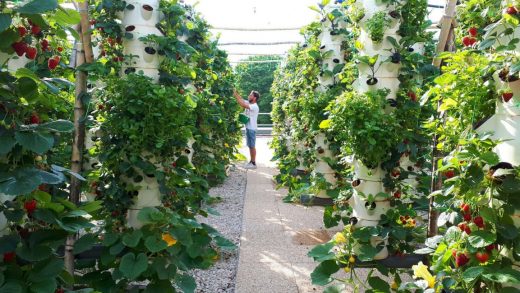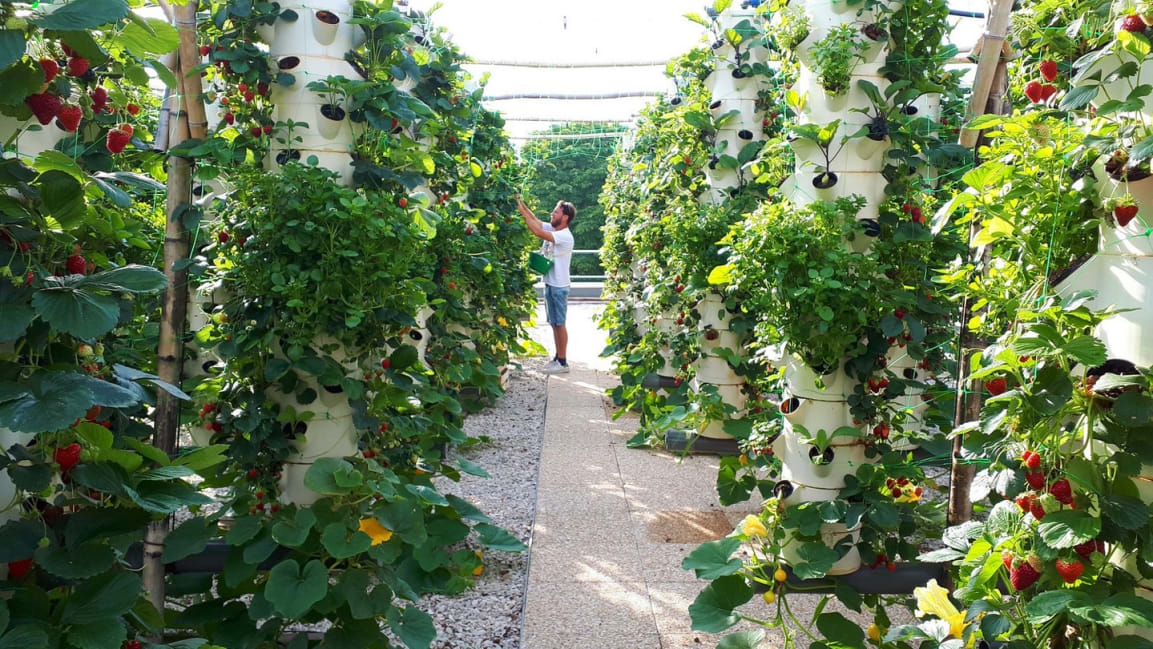The world’s largest rooftop farm will open soon in Paris
Large rooftop farms aren’t new—in Chicago’s South Side, a 75,000-square-foot greenhouse on top of a factory building grows up to 10 million heads of leafy greens each year (and was the largest rooftop greenhouse in the world when it was built). In Brooklyn, a new rooftop farm with a 55,000-square-foot garden and 5,000-square-foot greenhouse is opening this month. But the latest rooftop farm to open will be quite a bit larger: around 150,000 square feet.
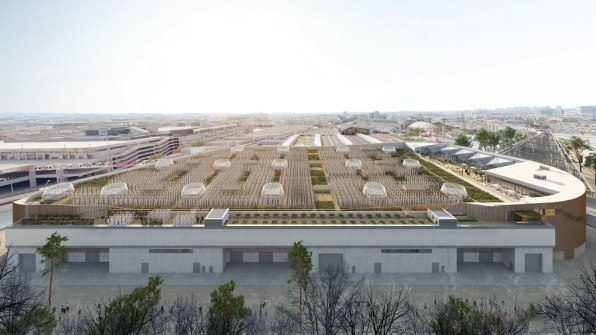
Agropolis, the Paris-based urban farming company that won the contract to design the farm as part of a redesigned entertainment complex, says that the scale of the operation has practical advantages. “Size is an opportunity to reach profitability, as balance on small or [mid-size] rooftops is difficult,” says Pascal Hardy.
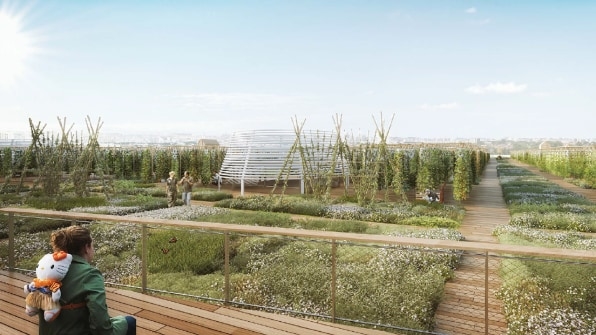
The crops will be grown open to the air, as on a traditional farm, but in vertical growing towers similar to those used in indoor farms like Plenty, a robot-run farm in Silicon Valley. Plants sprout out of the sides of the towers, making it possible to grow more food in a small area. The system is aeroponic, meaning that it doesn’t use soil, and the plants are fed with a nutrient-filled mist that meets organic standards and uses little water.
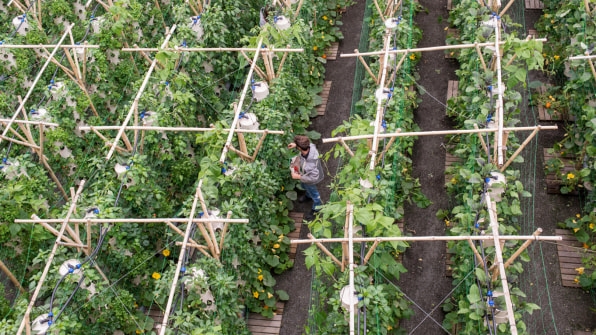
The company already runs smaller farms in other locations in Paris and other French cities, all on rooftops. While some of the largest vertical farming companies attempt to scale with indoor farms, Agropolis chooses to work outside. “When you have a controlled environment, you get rid of many hazards, but you also use lots of resources, like energy, to produce vegetables and fruits,” says Hardy. “We decided to have productive systems, like growing towers, but in an uncontrolled environment to reduce investments and to avoid wasting resources.” LED lights, for example, are more efficient than older lights used in indoor farms but still use large amounts of energy.
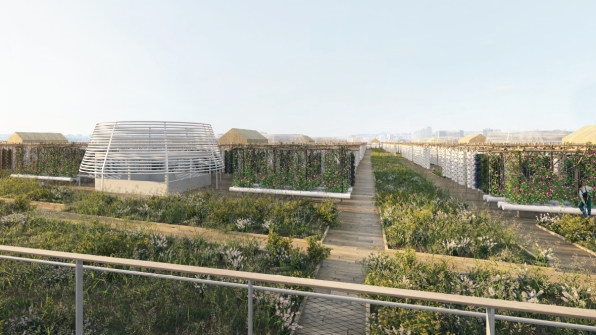
As with other companies working in this space, it’s not clear yet how well it will be able to compete with traditional agriculture. Hardy says that the crops will be more expensive than conventional crops, though cheaper than organic food grown on traditional farms, but he expects the farm to begin making a profit in the first year. The food will go directly to residents in the area, either through subscription boxes or in local stores and restaurants, reducing emissions from transportation. Local residents will also have the opportunity to have small garden plots of their own. A new rooftop restaurant next to the farm will also serve produce grown next door. For Agropolis, the work is a way to help the city become more resilient by producing more food locally; adding greenery to the roof can also help the city in dealing with increasing heat waves.
Hardy sees an opportunity to fill other unused rooftops throughout cities with farms. “This is why we designed light and modular systems, to be able to reach many of them,” he says.
(35)

